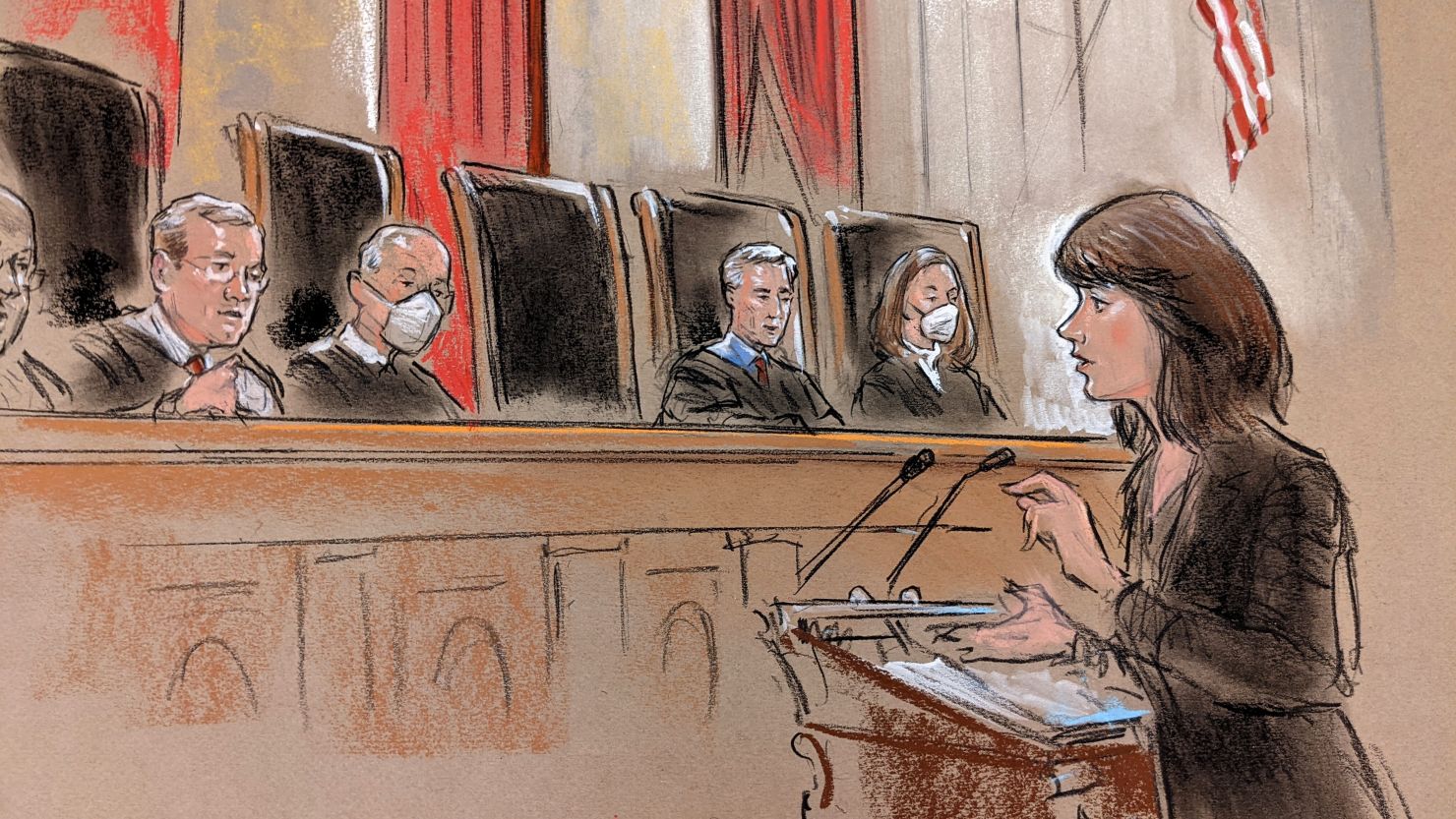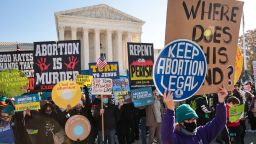The Supreme Court’s response to recent controversy over the justices’ masking practices reveals its studied lack of transparency and that, regardless of tensions among the nine, they will close ranks, particularly against the press.
The justices’ moves this week also sealed, rather than avoided, a place in the politicized mask wars amid the highly contagious Omicron variant.
The justices obscured questions related to Neil Gorsuch (who refuses to wear a mask) and Sonia Sotomayor (now participating in court hearings remotely). And the excruciatingly limited responses could not help but draw attention to the court’s more significant pattern of holding back basic information on some cases and internal practices.
In the past two days, the court issued two orders from the emergency, or “shadow” docket, one related to former President Donald Trump’s efforts to prevent release of documents to the US House committee investigating the January 6, 2021, rampage at the Capitol and the other involving a Texas abortion ban the court has let take effect, in conflict with the 1973 Roe v. Wade.
In neither case was the vote count of the full nine made public.
The mask controversy only reinforced the message that any public disclosures will be on the justices’ terms. Justices Gorsuch and Sotomayor sidestepped direct questions in their joint statement, and Chief Justice John Roberts issued a single sentence (“I did not request Justice Gorsuch or any other Justice to wear a mask on the bench.”), accompanied by word that he would have no further comment.
The court – and public – might have been better served if some direct explanation had been offered to journalists asking questions at the outset on January 7, when Gorsuch first ascended the bench as the lone justice without a mask and Sotomayor, who has diabetes and has taken special precautions throughout the pandemic, began participating in arguments from her chambers. Gorsuch and Sotomayor normally sit next to each other on the elevated bench.
Whatever Gorsuch’s reason for shunning a mask – perhaps personal, perhaps to make a statement – he was not sharing it.
Gorsuch has not responded to repeated CNN requests for an explanation, including on Friday.
Gorsuch, like his colleagues, is fully vaccinated and has received a booster shot against Covid-19. Court officials made the booster information public on January 4, after weeks of declining to answer reporters’ questions and only after the Associated Press published a story regarding the justices’ reluctance to say whether they had received a third dose.
Two rare statements
The justices broke their silence on Wednesday, a day after National Public Radio’s Nina Totenberg said that “according to court sources, Sotomayor did not feel safe in close proximity to people who were unmasked. Roberts, understanding that, in some form asked the other justices to mask up.”
Sotomayor and Gorsuch issued a statement on Wednesday that said, “Reporting that Justice Sotomayor asked Justice Gorsuch to wear a mask surprised us. It is false. While we may sometimes disagree about the law, we are warm colleagues and friends.”
Totenberg had not reported that Sotomayor asked Gorsuch to wear a mask. She said Roberts did.
A few hours after the Sotomayor-Gorsuch release on Wednesday, Roberts put out the statement that he had not asked Gorsuch or any justice to wear a mask.
NPR is standing by its report that Roberts “in some form asked the other justices to mask up.”
Perhaps Roberts signaled in some way that he wanted his colleagues to wear masks. Perhaps he did not. The larger point is that the justices could have explained the situation publicly.
The tangled accounts occur against the broader canvas of stealthy votes, after-hours actions, and a general reluctance to clarify information for the public. On September 1, when the justices first let a Texas abortion ban take effect, despite the 1973 decision that declared a constitutional right to abortion, the action occurred in a midnight order.
On Thursday, when the justices for the fourth time rejected a request by abortion clinics to intervene, this time to head off protracted state proceedings, the court acted in a one-sentence order. The three liberal justices publicly dissented, decrying, in Sotomayor’s words, that “for the fourth time, this Court declines to protect pregnant Texans from egregious violations of their constitutional rights.”
In prior court actions on the Texas ban at roughly six weeks of pregnancy, Roberts had also dissented. It was not clear whether he was with the majority or dissent on Thursday.
Wednesday night, when the justices issued an order rejecting Trump’s effort to keep documents from the US House of Representatives January 6 committee, they similarly provided no recorded vote.
Only one justice, Clarence Thomas, publicly dissented, so the vote may have been 8-1.
Yet because it is known that some justices choose to dissent only behind closed doors, only the nine know for certain what happened.






